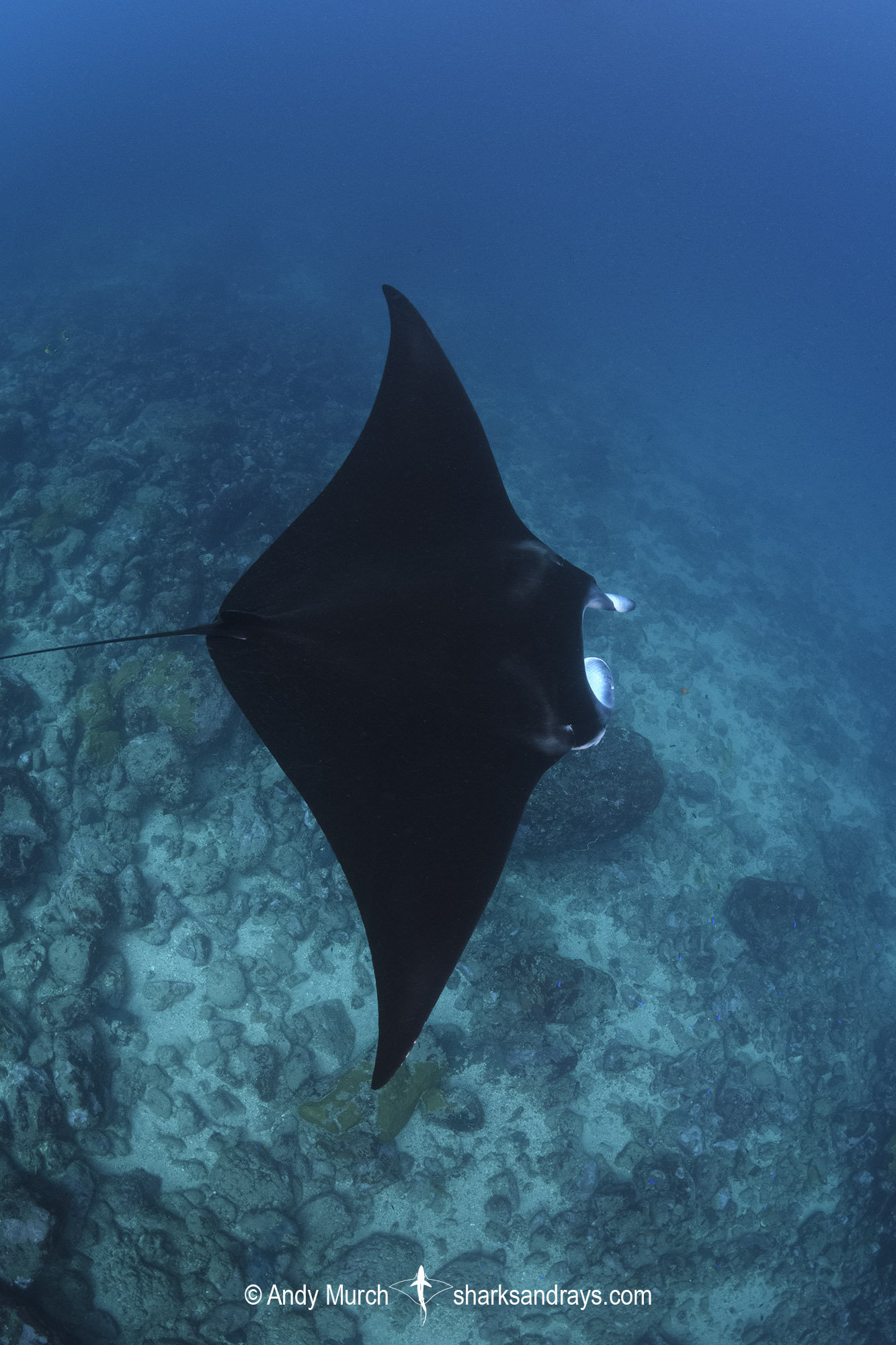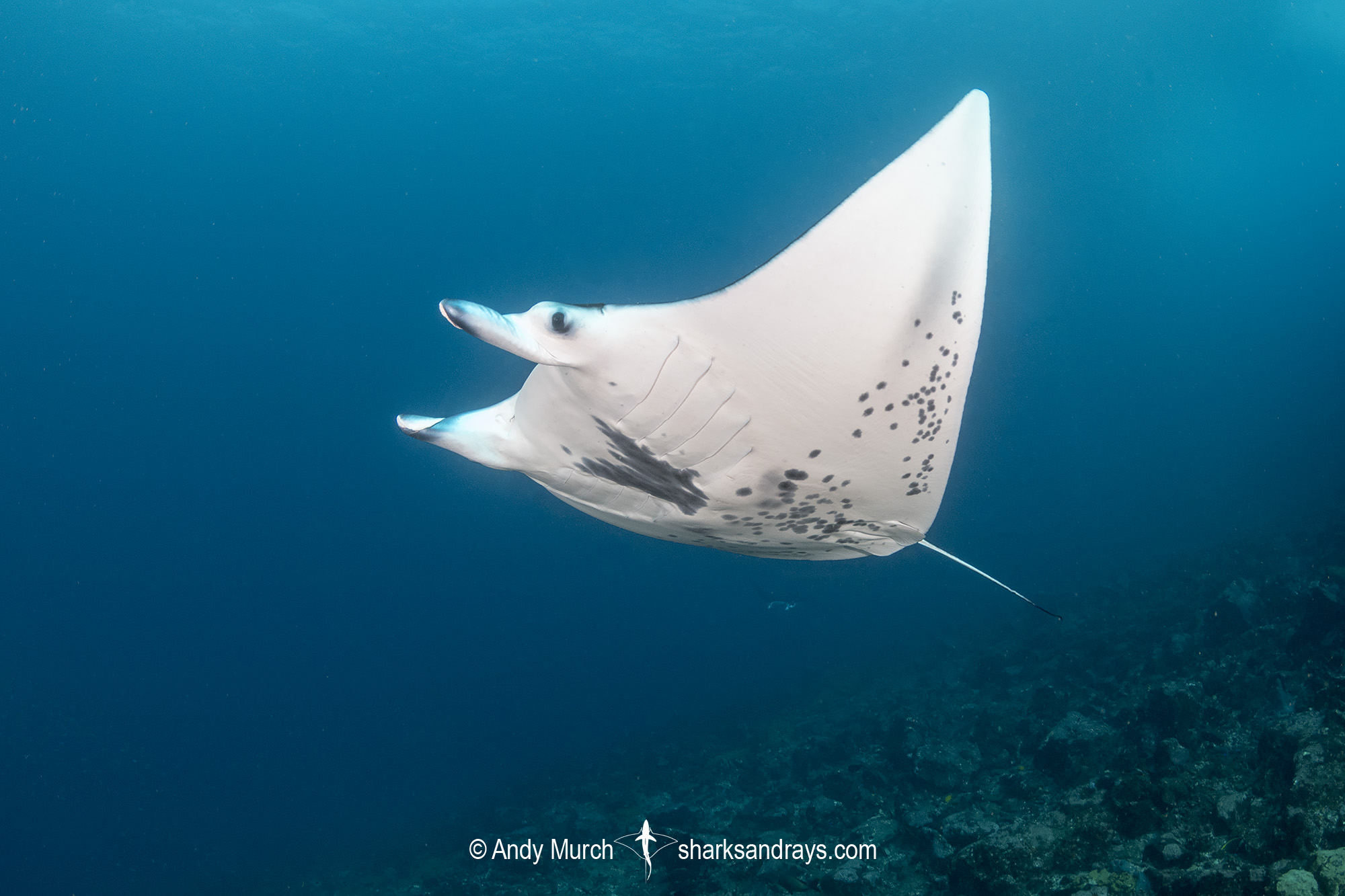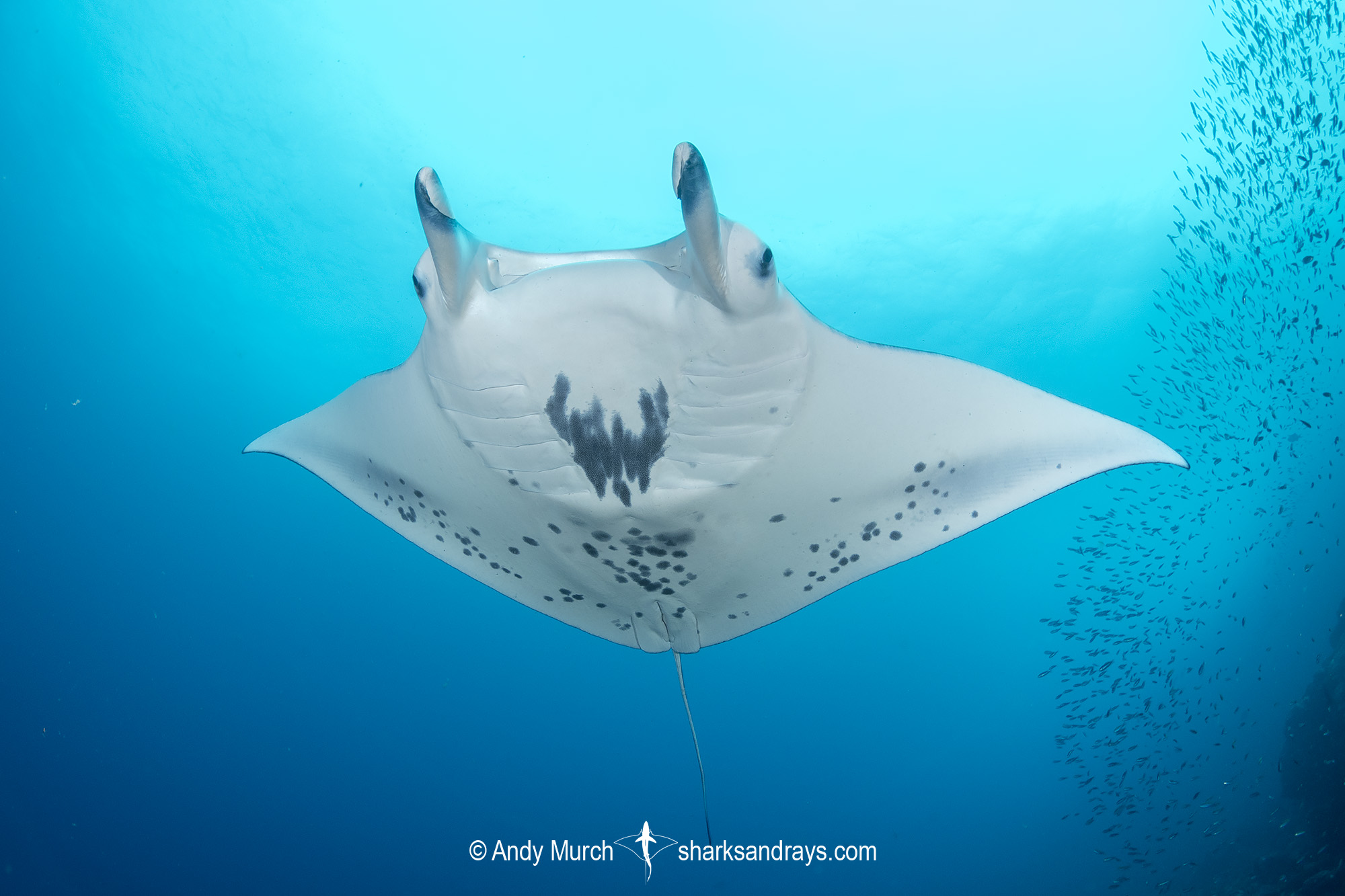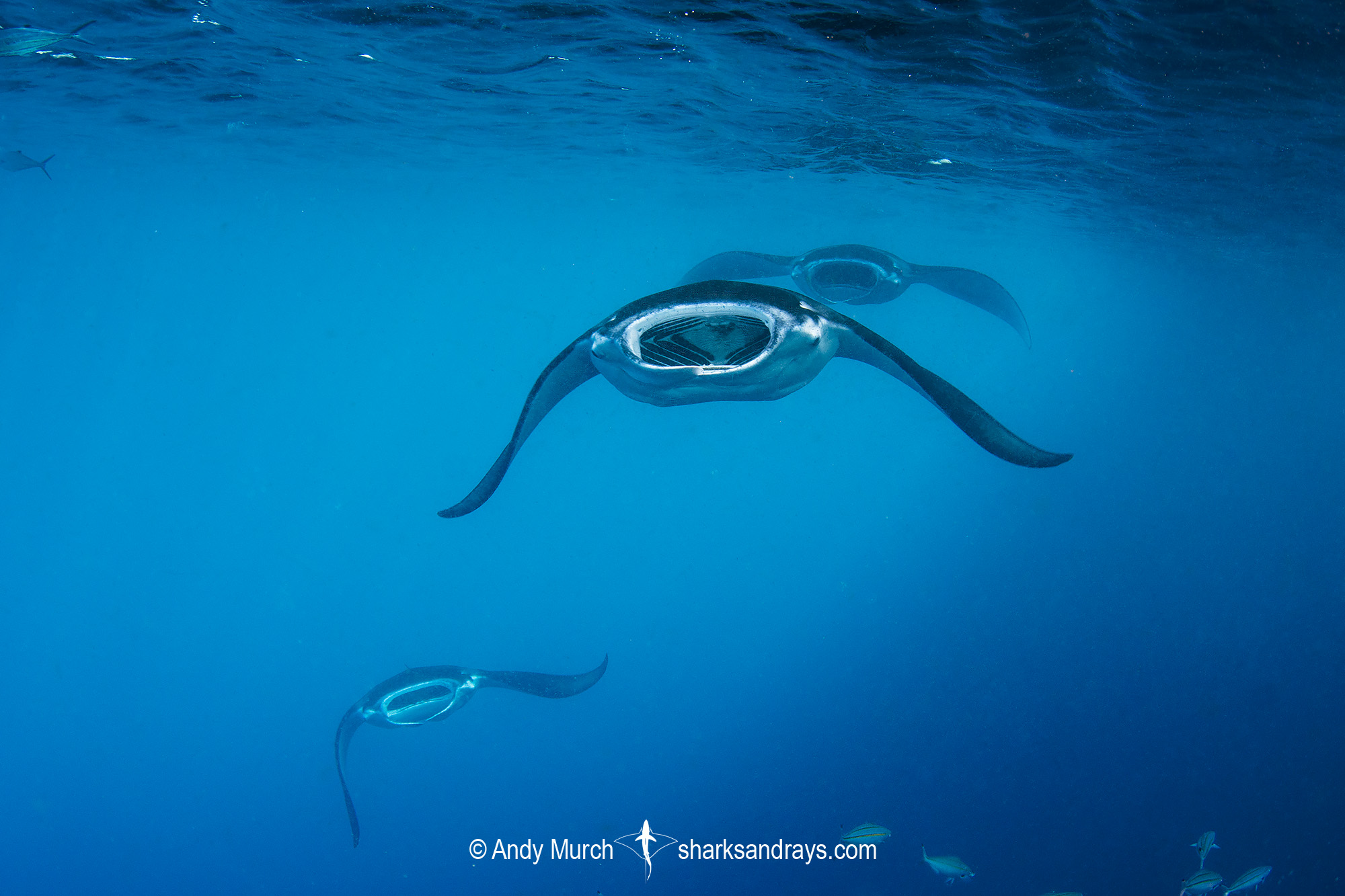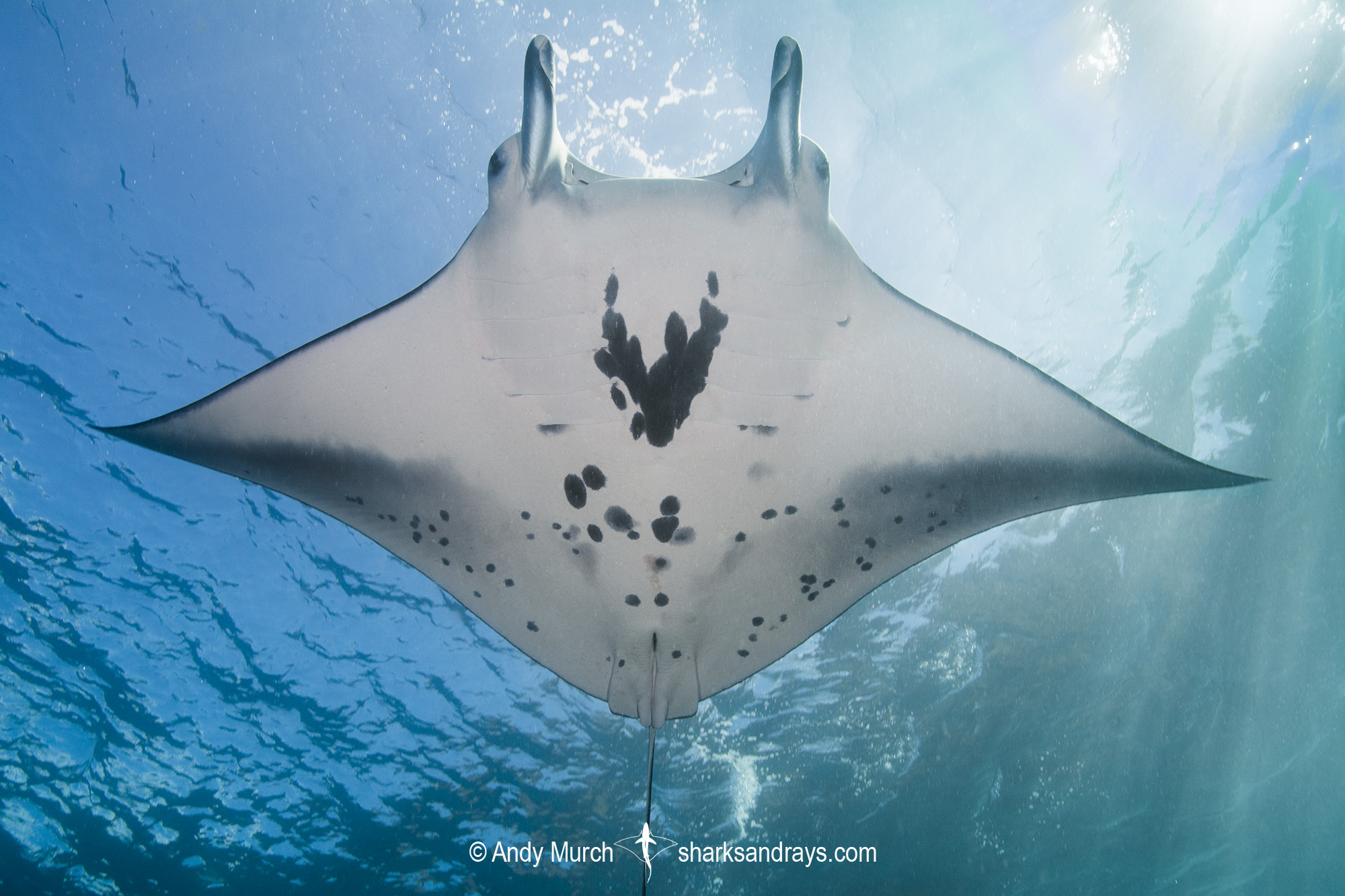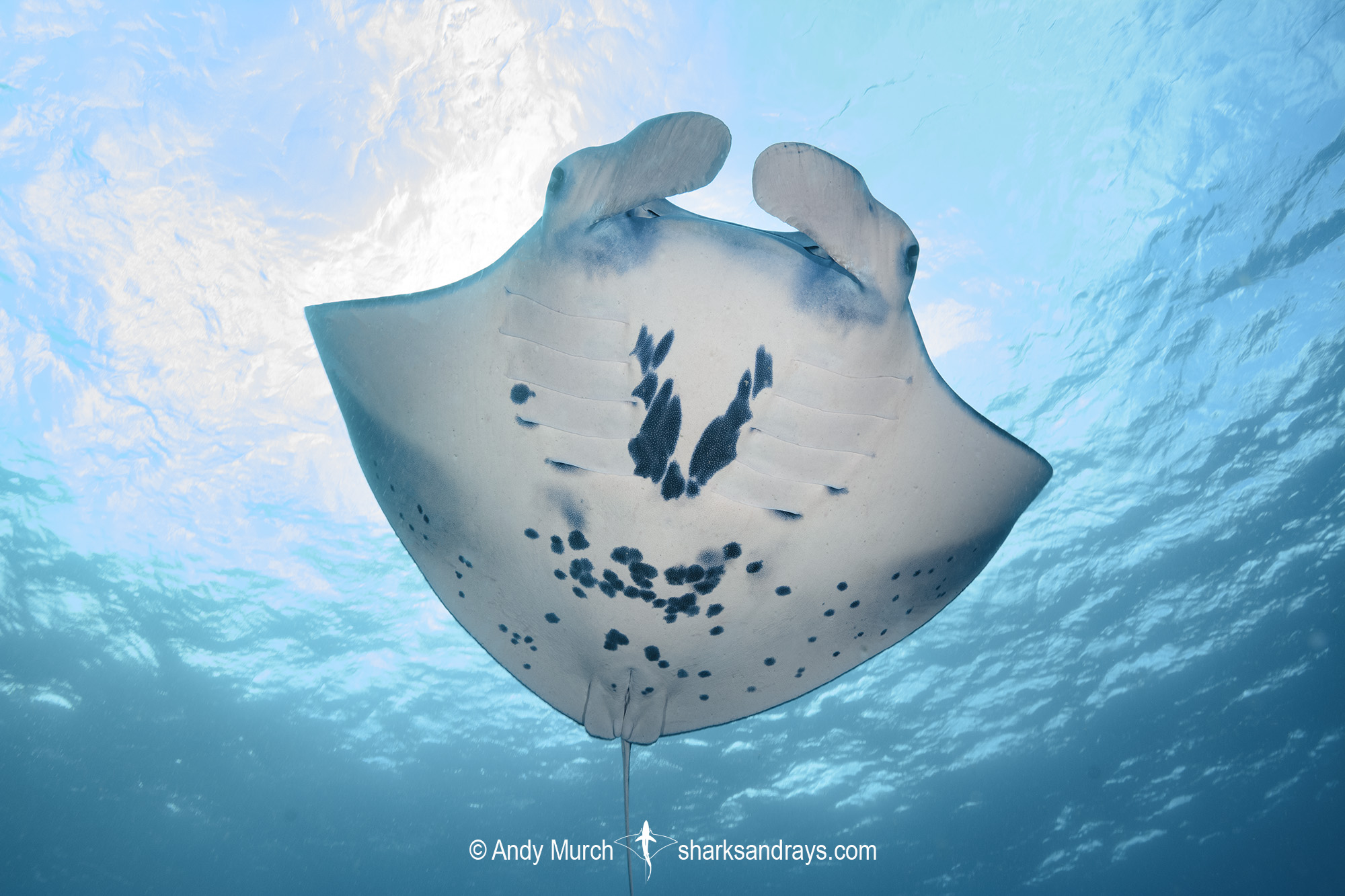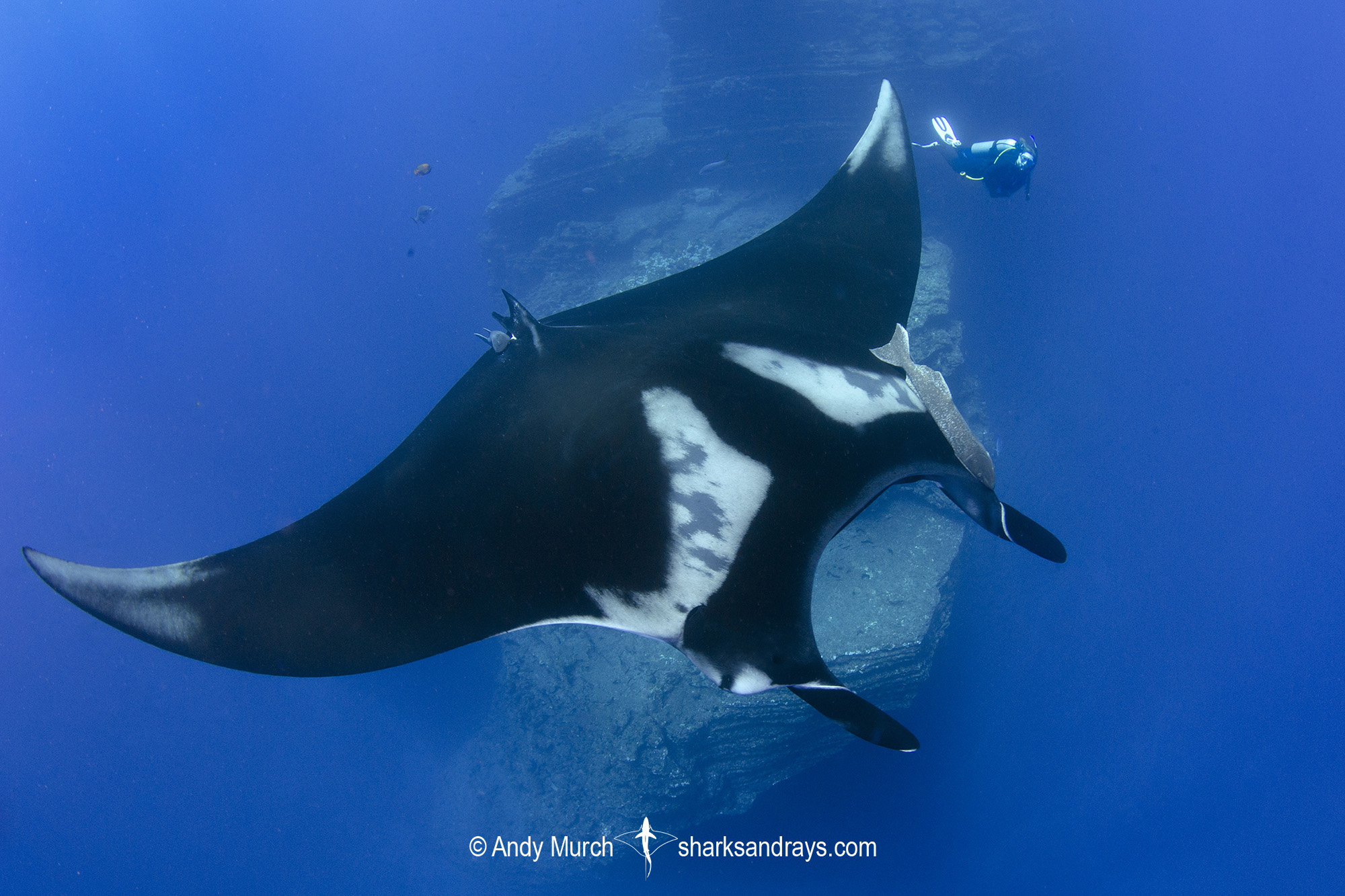Common name(s)
Reef Manta Ray, Manta Ray.
Identification
An extremely large ray with a vaguely kite-shaped disc and a large protruding head with a wide, terminal mouth. Disc width approximately 2.1-2.4 x length. Pectoral fins narrowly falcate, with convex anterior margins and concave posterior margins. Pectoral fin apices acutely pointed. Pelvic fins very small. One small dorsal fin present at base of tail; not falcate.
Head pronounced; extending well forward of pectoral fins. Slit-like spiracles posterior to eyes. Mouth very broad; 14-16% of disc width. Cephalic lobes long, broad, and highly flexible.
No denticle bands or teeth present on upper jaw. Band of vestigial teeth present on lower jaw.
Dermal denticles uniformly distributed; not in bands. Tail whiplike. Without caudal sting or calcified bulge near base of tail.
Colour
Dorsum predominantly black, usually with varying white or grey shoulder markings. Anterior margins of shoulder markings run at an oblique angle; starting at posterior edge of spiracle but slanting backwards at a slight angle towards midline of disc. Diffuse V-shaped marking anterior to tail extends forward to mid-back, occasionally curving outward to reach pectoral fin apices. Mouth and inner surface of cephalic lobes pale to white.
Ventrum mostly white with distinct black spots on 5th gill slits and highly variable spot patterns on chest. A wide dusky band usually present along posterior margin of ventrum. Tail uniformly black.
Note that colour among manta rays is highly variable with both melanistic and leucistic forms of reef mantas being relatively common.
Size
Maximum disc width at least 550cm. Disc width at birth 130-150cm.
Habitat
Pelagic in tropical/subtropical seas. Inhabits atolls, islands, and coastal areas with strong upwellings. Sometimes found in the open ocean but usually close to coral or rocky reefs. Surface to at least 432m.
Distribution
Mostly confined to the Indian Ocean, and west/central Pacific, with sparse records from the eastern Atlantic off west Africa. In the Indian Ocean, the reef manta is found around southeast Africa and Madagascar, the Maldives (where it is abundant), south of India, throughout southeast Asia and northern Australia, and around all major tropical island groups in the west/central tropical Pacific.
Conservation Status
ENDANGERED
The global population size of the reef manta is not known, but some local and regional population sizes have been estimated and are mostly small, at less than 1,000 individuals, with the exception of the Maldives where the population is estimated at ~10,000. While individuals are capable of long-distance movements they do so infrequently, consequently aggregations are widely separated with low connectivity resulting in a high likelihood of local depletion. The species has an extremely slow life history, producing only 1 pup on average every 4–5 years, and consequently is likely to have one of the lowest maximum rates of population increase (median 0.032 per year) among elasmobranchs. Reef Manta Rays are targeted or taken as bycatch in artisanal small-scale fisheries, as well as taken as bycatch in large-scale industrial tuna fisheries. The meat is consumed locally and they are traded internationally due to the rapid rise of the valuable gill plate trade. Where Reef Manta Rays are protected (in over a dozen countries and territories), and hence where they are not being fished, the sighting trends appear stable. Elsewhere, however, very rapid declines in sightings records have occurred where they are targeted or caught as bycatch. For example, Reef Manta Ray sightings declined by 98% over a 15-year period (half a generation span) in southern Mozambique. Where fishing pressure is higher, the Reef Manta Ray is suspected to have declined to the point of local extinction in many places throughout much of the Indian Ocean. Globally, the suspected population reduction is 30–49% over the past three generation lengths (87 years) with further population reduction suspected over the next three generation lengths (2018–2105). The suspected past and future population reduction is based on extremely low maximum rates of population increase, current and ongoing levels of exploitation, steep decline estimates, and reduction in extent of occurrence due to suspected local and regional extinctions, offset only by stable trajectories in a relatively few well-protected areas. The Reef Manta Ray is therefore assessed as Vulnerable A2bcd+3d.
Citation
Marshall, A., Barreto, R., Carlson, J., Fernando, D., Fordham, S., Francis, M.P., Herman, K., Jabado, R.W., Liu, K.M., Pacoureau, N., Rigby, C.L., Romanov, E. & Sherley, R.B. 2019. Mobula alfredi. The IUCN Red List of Threatened Species 2019: e.T195459A68632178. https://dx.doi.org/10.2305/IUCN.UK.2019-3.RLTS.T195459A68632178.en. Downloaded on 01 March 2021.
Reproduction
Aplacental viviparity. 1 pup per litter, with a 4-5 year reproductive cycle.
Diet
Diet mainly planktonic organisms. Probably also small bony fishes.
Behavior
An active swimmer that may be solitary or in small or large aggregations. Considered extremely intelligent. Manta rays have a heat exchange mechanism that warms oxygen-rich blood as it moves from the gills to the brain. It is suspected that this gives manta rays a mental advantage over other fishes.
Reaction to divers
Variously shy, tolerant, or curious depending on location.
Diving logistics
Undoubtedly, the highest concentrations of reef manta rays exist in the Maldives (population estimate ~10,000 animals) but many other locations in the Indian and Pacific Oceans are also very good places to encounter this species including Mozambique, Seychelles, Thailand, Indonesia, Australia, Micronesia, Fiji, French Polynesia, and Hawaii.
HANIFARU BAY, MALDIVES.
Although the mantas at Hanifaru are not as interactive as their oceanic cousins at Socorro, the sheer number of animals makes this encounter absolutely spectacular. Hundreds of mantas visit the small bay to feed; often forming long manta-trains with their mouths agape to scoop up plankton.
As amazing as this encounter can be, there are drawbacks to visiting Hanifaru. Due to the nutrient rich conditions, visibility in the bay is usually quite low and sometimes atrocious. Also, because the area is so popular and shallow enough for non-divers, there are usually so many people that entry into the bay has to be regulated, but there are still too many swimmers to consider this a pristine encounter. Flash photography and scuba gear is not permitted here but elsewhere in the Maldives there are numerous places where smaller aggregations and individuals can be photographed with strobes while on scuba.
KONA, HAWAII.
The well organized manta night dive off Kona has attracted divers for decades. Powerful lights are directed into the water, attracting dense swarms of plankton. Oceanic mantas then matirialize out of the darkness to barrel-roll in the thickest swarms of plankton, funnelling in the artificially concentrated food supply while the excited divers snap away with their cameras or simply hang in the water column and enjoy the show.
What’s new
View our full list of updates
Similar species
Oceanic Manta Ray Distinguished by more pronounced head, bulge at base of tail, and differing shoulder and ventral markings.

